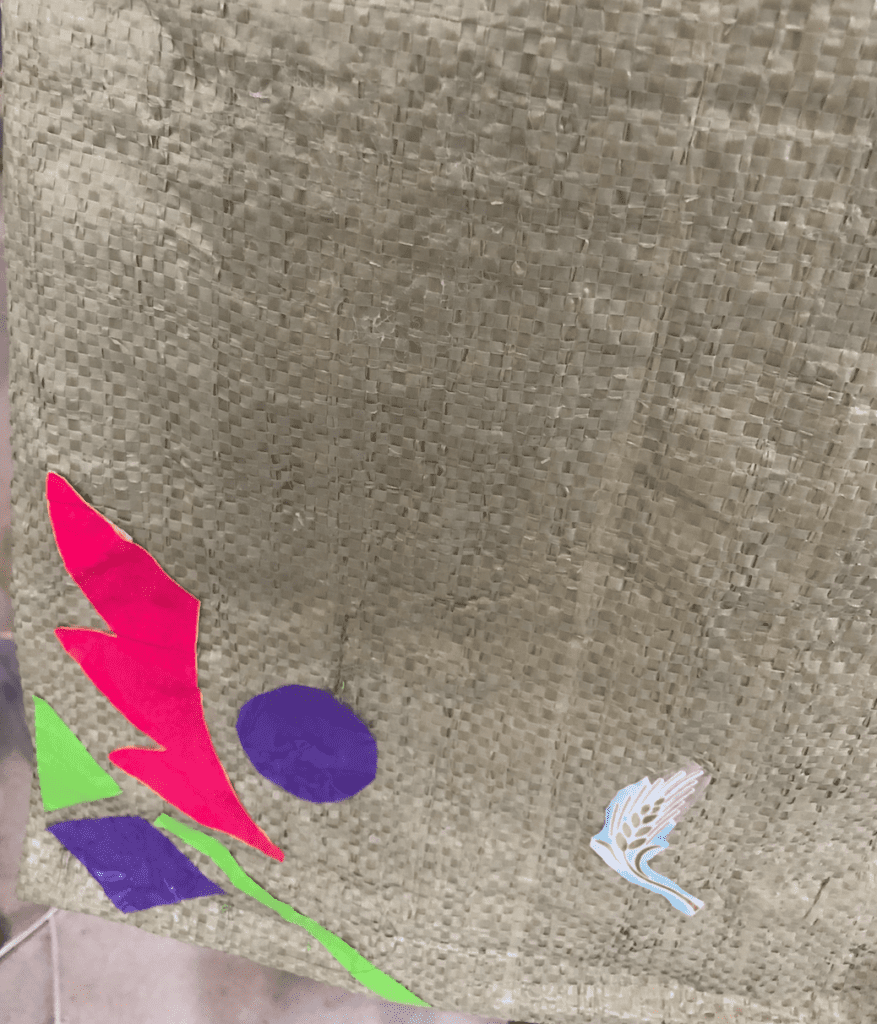Name: Mehr Un Nisa Javed
Date: 28th Oct 2019
Professor: Marcela Godoy
Objective: Write midterm project documentation
Title for the Project: “PakiCraft”-
I did not have a name for my project until last moment and then I got a chance to talk to the founder of the AfriCraft and found out his idea behind the name of the up-cycling/ recycling company he is running. Therefore, I thought it would be pretty interesting to have a broad category of PakiCraft which could be later use by me to broaden my work from just apparels to other sorts of useful crafts as well.
Statement for the Project:
“Don’t be into trends. Don’t make fashion own you, but you decide what you are, what you want to express by the way you dress and the way to live.” —Gianni Versace
I designed shirt basically out of trash. It will inspire the people that we do not have to follow the trends instead we must create our own trends and express problems through our clothing. Therefore, wearable will represent the trash management problem in Pakistan and how this trash could be efficiently converted into wearables and create more employment.
Materials Used-
Materials I used: These are based on the trash which is produced most in Pakistan.
Plastic Sac because we have these sacs a lot in Pakistan because it is an agrarian economy and we used these sacs for potatoes and other vegetables. Thus, I have seen these sacs all my life.
The industry, driven by fast fashion, has steadily become one of the most serious polluters in the world. Clothing manufacture was never exactly tidy, what with toxic dyes, copious amounts of water needed for growing fiber and processing fabrics, and waste from factories. But in 2015, carbon emissions from clothes surpassed those emitted from all international flights and all maritime shipping combined. Cotton, for example, uses more pesticides than any other crop—and organic cotton takes up more land and much more water than conventionally grown cotton. At the same time, clothes are worn for less time than they ever have been previously. Every year, 12.7 million tons of textiles enter American landfills; in 2015 in the UK, 300,000 tons of clothes went in, about ten pounds per person. Giving old clothes to charity isn’t the charitable act you might think it is—many of the clothes made today are of such poor quality that they cannot be sold again.
The looming Plastic Pollution in the world

The looming PLASTIC POLLUTION problem in PAKISTAN


Process:
I started with first taking a sac and then cutting it into the shape of a shirt. After that a sewed it and then started to work on the pockets. I made pockets out of the another colored sacs and then made it borders using the handle of a plastic delivery bag. Then I sewed it. After that, I sewed the end of the pockets and the sleeves and then also sewed the borders of the shirt to make it look neater. It was pretty harder to work on this sac material and it got really messy at times as well because the threads started to come out. For making the geometric design at the two borders of the shirt I used different colored plastic tapes and sticked them. Finally, for the dupatta (which is very important part of a shirt in Pakistan) I used the packaging material of white colored and then I sticked embroidery pieces (which I found on trash) on to it.
Significane:
I started with designing a wearable but that was Pakistani Kurta style. The Kurta is mainly made up of plastic as Pakistan and trash bags because PAKISTAN is a developing country and has a lot of waste management issues. The maximum usage there is of plastic because people are not really aware of the bad effects of the plastic due to low literacy rate and low encouragement by the government to decrease the usage of plastic and move towards sustainability. Recently, in the capital of Pakistan plastic was banned but still the policy was eloped without almost no implementation so this project will HIGHLIGHT the issue. Therefore, my project of making a wearable will actually help the fashion designer in my country to think more about the environment and try to help them in thinking in the direction of making apparels in future out of the huge amount of trash which is being generated in Pakistan. hopefully it will be replicated in large scale and will bring a new wave of environment protection in future and also become a NEW TREND. Moreover, I also hope to see newbies like me bringing a new wave and not being afraid of starting a new venture and taking risk to develop things out of trash.
Final Output looks like this:




Leave a Reply